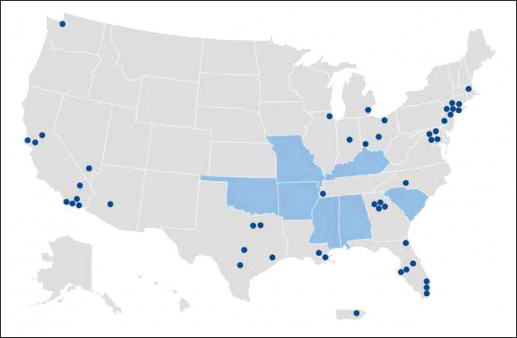Last year, President Trump launched the federal initiative “Ending the HIV Epidemic: A Plan for America.” Its goal is to lower HIV rates by 75% across the nation by 2025 and by 90% by 2030. The plan aims to accomplish this by focusing on four pillars of action:
- Diagnose all individuals living with HIV as early as possible after infection;
- Treat HIV rapidly and effectively so that people achieve long-term viral suppression;
- Prevent at-risk individuals from becoming HIV positive, including through the use of pre-exposure prophylaxis (PrEP); and
- Rapidly detect and respond to emerging HIV clusters to further reduce new transmissions.
The U.S. plan concentrates federal prevention and treatment efforts on HIV hot spots across the country. Specifically, this includes the 48 counties that together with Washington, DC, and San Juan, Puerto Rico, account for 50% of new HIV cases in recent years. It also includes seven rural states with high HIV rates: Alabama, Arkansas, Kentucky, Mississippi, Missouri, Oklahoma and South Carolina.
In addition to geographic targets, the initiative uses molecular surveillance—the tracking of HIV data on individuals—to determine where the virus is spreading and where to steer resources. The U.S. plan also funds research and programs (click here for one example) that address communities at higher risk for HIV, such as gay and bisexual Latinos and transgender Latinas.







Comments
Comments